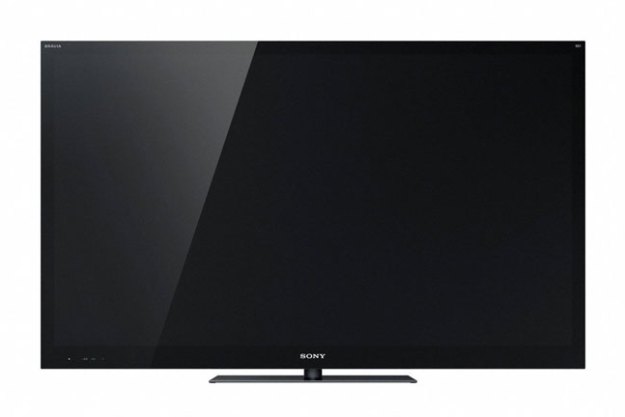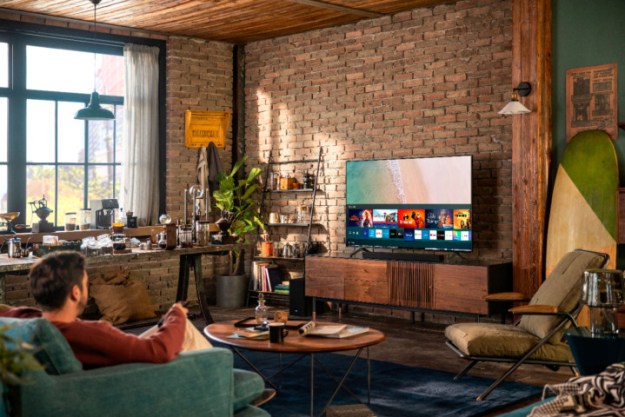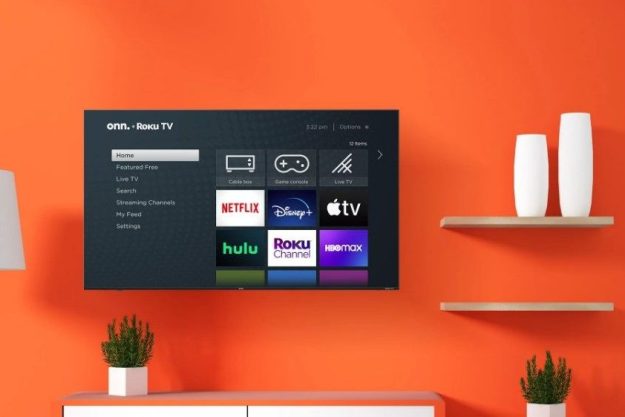
“Enthusiasts searching for the very best in cutting-edge, performance TVs give the Sony Bravia XBR-65HX929 a serious look.”
- Amazing black level and contrast
- Super bright white levels
- Slick, flat panel with darkened, anti-glare glass
- Built-in Wi-Fi, plenty of Internet apps.
- Quick network media access
- Backlit remote
- Oddly placed RS-232 jack adds unnecessary depth
- 3D glasses not included
- Expensive
Sony XBR-HX929 series information: This review is based on our hands-on experience with the 46-inch XBR-46HX929 TV. However, our observations also apply to the two other sizes in Sony’s XBR-HX929 series of LED TVs, including the 55-inch XBR-55HX929 and 65-inch XBR-65HX929. According to Sony, the three sets have identical specifications (save dimensions and weight) and should offer similar performance.
| Models in Sony’s XBR-HX929 series | Size |
| Sony Bravia XBR-46HX929 (reviewed) | 46 inches |
| Sony Bravia XBR-55HX929 | 55 inches |
| Sony Bravia XBR-65HX929 | 65 inches |

Out of the box
The Sony Bravia XBR-65HX929 comes in a considerably smaller package and is just a bit lighter than the 46-inch Toshiba we recently reviewed – 42.8 pounds. Inside the box, we found the display, its table-top stand, a component video/AV dongle, power cord and user manual. Attaching the panel to the stand was a simple and quick process, though we felt ourselves worrying about stability as we tightened the last of the necessary screws.
Features and design
The displays in this series are stunningly attractive. The super-thin bezel on our 46-inch review sample may be a tad thicker than some of the “nearly edgeless” models from Sony’s competitors, but there’s something especially classy about the way this TV’s Gorilla Glass meets flush with the edging in one seamless piece, keeping the surface totally flat and “seemingly edgeless.” Aside from some barely noticeable status LEDs, only Sony’s moniker breaks up an otherwise squeaky-clean front surface.

As for connectivity, Sony hit all the right points. We found two USB ports, four HDMI inputs (one with audio return channel, or ARC), PC video and audio inputs, coaxial cable input, Ethernet jack, optical digital audio output, headphone output and a space to connect the provided dongle for old-school component video and composite jacks, should those connections be desired. Ah, and the RS-232 jack, of course. The inputs are split up between the lower back portion of the back panel and the upper left side for discreet cable connections or easy access, respectively.
Jammed under the hood is a ton of processing and proprietary Sony extras as well as a suite of Internet content apps. We like Sony’s presence sensor, which uses a built-in “camera” to monitor the room and shut of the display if it is abandoned for a specified duration. It will also display a big warning sign should children (or adults, really) get too close for safe viewing. That same sensor allows the TV’s optional “Ambience Sensor” to adjust the display’s brightness according to lighting conditions and can adjust picture based on viewers’ positions in the room, too. What the camera won’t do, however, is work with the TV’s built-in Skype capability. To use Skype, you’ll need to pick up the CMU-BR100, which currently goes for about $100.

We like the remote control Sony offers with this series of televisions. A power button located a third of the way up on the back of the remote ended up being a nice convenience, as did the large navigation wheel on the front. Most of the critical buttons are illuminated by the remote’s blue back-light, but the button that engages the backlight isn’t all that well placed.

Performance
To test the 46HX929 we connected a Sony 1700ES Blu-ray player, Xbox 360 and an HD antenna for some terrestrial HD reception. For video content, we chose the 2D version of Avatar on Blu-ray, the 3D version of Cloudy with a Chance of Meatballs and dusted off Titan A.E. for some up-converted DVD action. We also spent some time streaming YouTube and Netflix videos, as well as video and music stored on a networked computer.

This TV offers a knock-out picture. The black levels on the 46HX929 are truly impressive, as is its high contrast ratio. Color accuracy is among the best we’ve seen, pulling off fine gradations between oranges and browns in some of our familiar testing material that we’ve not noticed before. We also felt the Sony’s treatment of reds is some of the best we’ve ever seen, rivaling that of many high-end plasma sets. We spent plenty of time ogling this TV and were consistently impressed, hour after hour, at just how engaging and satisfying the picture was.
3D performance was well above average, too. Whereas we’ve noticed some significant flicker with other 3D systems that rely on active shutter glasses, this TV remained largely flicker free and the image, beyond the 3D magic, was still razor sharp with excellent color and contrast. We’ve made pretty quick work of our 3D evaluations in the past, but we actually enjoyed the effect this time and found ourselves lingering on Cloudy With A Chance of Meatballs 3D a little longer than we needed to.

Off-angle viewing on this set is better than average but, as expected, we achieved the best results when seated with the display directly in front of us.
We liked the icon-driven menu interface the 46HX929 offered. Major subsections are navigated through a horizontal bar at the bottom of the screen while a vertical column toward the right exposes more specific choices. It was an easy interface to get used to, and will probably be met with appreciation by those not used to so many options built into a single piece of electronics.
Conclusion
Sony is certainly charging a premium price for the HX929 series but, to its credit, the sets deliver excellent picture quality, great 3D performance, useful features and plenty of other bells and whistles in a very smart-looking display. Enthusiasts searching for the very best in cutting-edge, performance TVs give one of the HX929 series’ three sizes a serious look.
Highs:
- Amazing black level and contrast
- Super bright white levels
- Slick, flat panel with darkened, anti-glare glass
- Built-in Wi-Fi, plenty of Internet apps.
- Quick network media access
- Backlit remote
Lows:
- Oddly placed RS-232 jack adds unnecessary depth
- 3D glasses not included
- Expensive
Editors' Recommendations
- Sony debuts the Bravia 9, its brightest 4K TV ever, alongside new 2024 models
- Apple Vision Pro brings TV, 3D movies to a massive, 100-foot-wide screen





